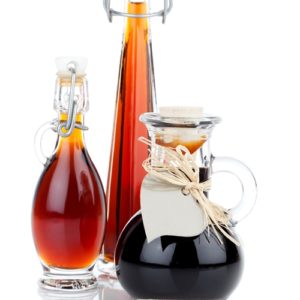While attending Boulder Culinary school, you may learn some interesting ways to use maple syrup. Not only is it tasty on pancakes, but this sweet sauce is also an excellent glaze and brings vanilla ice cream to a whole new level. Have you ever thought about how it’s made? Follow these steps and you can make your own maple syrup:
1. Pick your trees
Establish where the trees are that you are going to tap. Make sure they are maple trees and that the diameter of the trunk is larger than 12 inches. This means the tree is mature and will produce proper sap. If you tap a tree that is too young, you can damage it. Many people mark the trees they plan to tap by tying a ribbon around them so they can easily be found throughout the maple syrup making process.
2. Get your equipment together
You can purchase a starter kit full of all the supplies you’ll need for tree tapping or you can create your own. You will need the following equipment:
- Buckets: Aluminum is a common choice because it is hardier than plastic.
- Lids: Prevent bugs, rain and snow from getting into your sap.
- Spiles: After you’ve drilled a hole into the tree you will insert a spile to move the sap into your bucket.
- Hooks: Attach to the spile and hold the bucket in place so the sap drips into it.
- Drill bit: Most people use a 7/16 drill bit with a 3/8 shank for drilling holes into the tree.
Often, people use cheese cloth to filter pieces of bark and other solids out of the sap when moving it from the bucket attached to the spile to a container for storage. Consider keeping this with your tapping kit.
3. Wait for the right weather
In order for the sap to ooze out of the tree, the temperature must be above freezing during the day and below freezing at night. Very early spring or late winter is the best time to tap. The tapping season is a short 6-8 weeks and ends once the trees begin budding and the temperature no longer drops below freezing at night. Once the weather is perfect, you can grab your kit and head out to the maples you’re going to tap.
4. Tap the trees
Use a drill to make a shallow hole at a slight upward angle about three feet up the tree trunk. Brush away the wood shavings and place the spile in the hole. Use a hammer to gently tap it into place. You should see sap coming out of the spile. Attach the hook to the spile and hang the bucket from it. Close the lid and you’ve got your first tree tapped! Continue this process until you have buckets ready at every tree you’re tapping.
5. Gather the sap and make syrup
Use food grade containers (like a store bought bucket or even clean juice containers) to travel between the trees you have tapped and collect the sap. When the sap is flowing freely you’ll want to collect it daily so it doesn’t ferment and become unusable. Pour your sap into a pot and heat it until the liquid is at a rolling boil. Keep it that way for one minute and then take the pot off the heat. Your sap is now safe to taste. If you don’t boil it, you have a chance of being exposed to bacteria that can make you sick, so it’s best to practice this sterilization method.
In order to make a quart of syrup, you will need 10 gallons of sap. Many people choose to boil the sap outdoors because it takes a long time and makes a significant amount of steam, which can be dangerous and even remove wallpaper in your home. It takes several hours to boil the sap down into syrup form. You’ll know its ready when the sap has turned from a watery texture and light color to a dark brown one more akin to the pancake syrup you can purchase in the store. Once you’ve fully boiled down the sap, you can let it cool and enjoy eating your newly made maple syrup.




